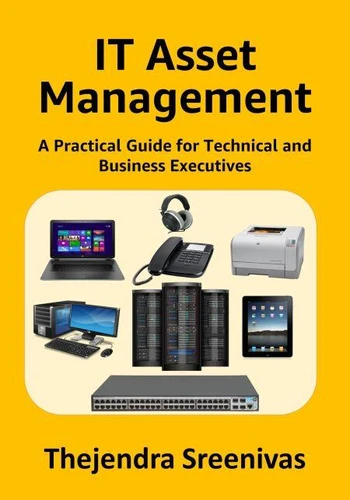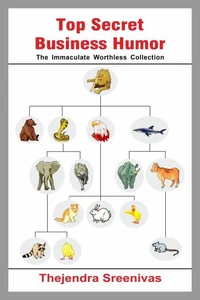IT Asset Management - A Practical Guide for Technical and Business Executives
Par :Formats :
Disponible dans votre compte client Decitre ou Furet du Nord dès validation de votre commande. Le format ePub est :
- Compatible avec une lecture sur My Vivlio (smartphone, tablette, ordinateur)
- Compatible avec une lecture sur liseuses Vivlio
- Pour les liseuses autres que Vivlio, vous devez utiliser le logiciel Adobe Digital Edition. Non compatible avec la lecture sur les liseuses Kindle, Remarkable et Sony
 , qui est-ce ?
, qui est-ce ?Notre partenaire de plateforme de lecture numérique où vous retrouverez l'ensemble de vos ebooks gratuitement
Pour en savoir plus sur nos ebooks, consultez notre aide en ligne ici
- FormatePub
- ISBN978-0-463-00635-1
- EAN9780463006351
- Date de parution13/01/2020
- Protection num.pas de protection
- Infos supplémentairesepub
- ÉditeurBluewater
Résumé
IT Asset Management is often considered a boring and low-grade task by many technical executives, CTOs, and even CIOs. This is because most technical staff in many organizations hates getting involved in the commercial and financial aspects of managing IT assets as they think this is just a glorified storekeeper job. Such misconceptions result in frequent battles between the finance, audit, and technical departments.
However, IT asset management is an extremely crucial function of any organization and must be given the highest importance possible by the senior management. An IT asset manager's job is a powerful position that can help organizations to save costs, ensure material discipline, offload asset activities from technical staff who may not be qualified or interested in doing such activities, ensure physical and data security, help in budgeting, and supervise the complete lifecycle of IT assets used in an organization.
Secondly, it's not a mere storekeeper's job as many executives fear and this book will show why. This book simplifies the procedures and processes used to successfully implement a workable IT asset management department in an organization. It removes any doubts or uncertainties about how it can be easily achieved with the help of a simple combination of qualified internal members of staff, contractors, external consultants, and some common sense.
To make it easy for the reader to implement asset management, no IT jargon or theoretical standards are mentioned in the main contents of this book. This is because the book is intended to be a purely practical guide and also the concepts explained have no shelf life. Simplicity should be the hallmark of any IT support department. If you make things simple, then all your customers will appreciate it.
If you make things complex and bureaucratic, then only you will appreciate it. Unless stated otherwise, the names of any companies or people mentioned in any examples are fictitious. Where names of actual companies and products are mentioned, they are the trademarks of their respective organizations.
However, IT asset management is an extremely crucial function of any organization and must be given the highest importance possible by the senior management. An IT asset manager's job is a powerful position that can help organizations to save costs, ensure material discipline, offload asset activities from technical staff who may not be qualified or interested in doing such activities, ensure physical and data security, help in budgeting, and supervise the complete lifecycle of IT assets used in an organization.
Secondly, it's not a mere storekeeper's job as many executives fear and this book will show why. This book simplifies the procedures and processes used to successfully implement a workable IT asset management department in an organization. It removes any doubts or uncertainties about how it can be easily achieved with the help of a simple combination of qualified internal members of staff, contractors, external consultants, and some common sense.
To make it easy for the reader to implement asset management, no IT jargon or theoretical standards are mentioned in the main contents of this book. This is because the book is intended to be a purely practical guide and also the concepts explained have no shelf life. Simplicity should be the hallmark of any IT support department. If you make things simple, then all your customers will appreciate it.
If you make things complex and bureaucratic, then only you will appreciate it. Unless stated otherwise, the names of any companies or people mentioned in any examples are fictitious. Where names of actual companies and products are mentioned, they are the trademarks of their respective organizations.
IT Asset Management is often considered a boring and low-grade task by many technical executives, CTOs, and even CIOs. This is because most technical staff in many organizations hates getting involved in the commercial and financial aspects of managing IT assets as they think this is just a glorified storekeeper job. Such misconceptions result in frequent battles between the finance, audit, and technical departments.
However, IT asset management is an extremely crucial function of any organization and must be given the highest importance possible by the senior management. An IT asset manager's job is a powerful position that can help organizations to save costs, ensure material discipline, offload asset activities from technical staff who may not be qualified or interested in doing such activities, ensure physical and data security, help in budgeting, and supervise the complete lifecycle of IT assets used in an organization.
Secondly, it's not a mere storekeeper's job as many executives fear and this book will show why. This book simplifies the procedures and processes used to successfully implement a workable IT asset management department in an organization. It removes any doubts or uncertainties about how it can be easily achieved with the help of a simple combination of qualified internal members of staff, contractors, external consultants, and some common sense.
To make it easy for the reader to implement asset management, no IT jargon or theoretical standards are mentioned in the main contents of this book. This is because the book is intended to be a purely practical guide and also the concepts explained have no shelf life. Simplicity should be the hallmark of any IT support department. If you make things simple, then all your customers will appreciate it.
If you make things complex and bureaucratic, then only you will appreciate it. Unless stated otherwise, the names of any companies or people mentioned in any examples are fictitious. Where names of actual companies and products are mentioned, they are the trademarks of their respective organizations.
However, IT asset management is an extremely crucial function of any organization and must be given the highest importance possible by the senior management. An IT asset manager's job is a powerful position that can help organizations to save costs, ensure material discipline, offload asset activities from technical staff who may not be qualified or interested in doing such activities, ensure physical and data security, help in budgeting, and supervise the complete lifecycle of IT assets used in an organization.
Secondly, it's not a mere storekeeper's job as many executives fear and this book will show why. This book simplifies the procedures and processes used to successfully implement a workable IT asset management department in an organization. It removes any doubts or uncertainties about how it can be easily achieved with the help of a simple combination of qualified internal members of staff, contractors, external consultants, and some common sense.
To make it easy for the reader to implement asset management, no IT jargon or theoretical standards are mentioned in the main contents of this book. This is because the book is intended to be a purely practical guide and also the concepts explained have no shelf life. Simplicity should be the hallmark of any IT support department. If you make things simple, then all your customers will appreciate it.
If you make things complex and bureaucratic, then only you will appreciate it. Unless stated otherwise, the names of any companies or people mentioned in any examples are fictitious. Where names of actual companies and products are mentioned, they are the trademarks of their respective organizations.























